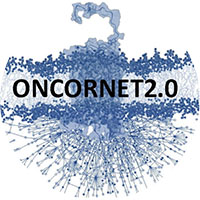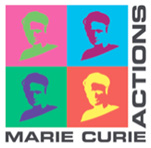Small ligands to modulate CXCR4 and CXCR7 mono-, homo-, and heteromers
Early stage researcher 1 (ESR1) project – Ilze Adlere
Supervision: Dr R Smits, Prof IJ De Esch
Host: Griffin Discoveries (NL)
I- Project proposal:
Aim:
1. Design and synthesize small chemical compounds to specifically target the 7TM binding pocket of CXCR4 and CXCR7.
2. Optimize identified small chemical compounds with respect to (biased) efficacy and binding kinetic profiles.
3. Design and synthesize small chemical compounds to specifically target CXCR4/CXCR7 heteromers.
Methodology:
Using existing hits or new HTS hits as starting points, novel CXCR4 and CXCR7 compounds will be designed and synthesized. A wide variety of chemical transformations will be employed to generate series of ligands, using parallel and high throughput chemistry equipment. The structure of the different ligand classes will be optimized for the appropriate affinity, activity or binding kinetics that enable other ONCORNET partners to perform their pharmacological characterisation of the chemokine receptors. Also the synthesis and isolation of tool compounds is foreseen, for example by linking CXCR4 or CXCR7 scaffolds to fluorescent probes. The design of any new ligands can be supported by computer-aided drug design studies, in close collaboration with ESR5.
Planned secondments: Euroscreen (BE), UNOTT (UK).
II- Requirement candidate:
Required diploma: MSc degree in medicinal chemistry, synthetic organic chemistry, Pharmaceutical Sciences or related Molecular Life Science degree.
Required expertise: Experience in the design and synthesis of biologically active compounds and in developing detailed structure-activity relationships is a necessity. The candidate has a strong background in synthetic medicinal chemistry or synthetic organic chemistry and has experience in variety of chemical transformations using parallel and high throughput chemistry equipment.
Recommended expertise: Design and synthesis of GPCR ligands. An interest in computer-aided drug design (in particular ligand-based approaches) would be an advantage. The candidate needs to be able to discuss and develop the structure-based drug design approaches in collaboration with ESR5.
Key publications:
1. Smits RA, Lim HD, van der Meer T, Kuhne S, Bessembinder K, Zuiderveld OP, Wijtmans M, de Esch IJ, Leurs R (2012) Ligand based design of novel histamine H(4) receptor antagonists; fragment optimization and analysis of binding kinetics. Bioorg Med Chem Lett. 22: 461.
2. Smits RA, Leurs R, de Esch IJ (2009) Major advances in the development of histamine H4 receptor ligands. Drug Discov Today. 14: 745.
3. Andaloussi M, Lim HD, van der Meer T, Sijm M, Poulie CB, de Esch IJ, Leurs R, Smits RA (2013) A novel series of histamine H4 receptor antagonists based on the pyrido[2,3-d]pyrimidine scaffold: comparison of hERG binding and target residence time with PF-3893787. Bioorg. Med. Chem. Lett. 23:3663-2670.
4. Quinazolines and related heterocyclic compounds, and their therapeutic use. PCT patent application. WO2009083608.
Follow us on
Contact details
Please contact us at:
e.v.langemeijer@vu.nl
ONCORNET Coordinator
VU University Amsterdam
The Netherlands




